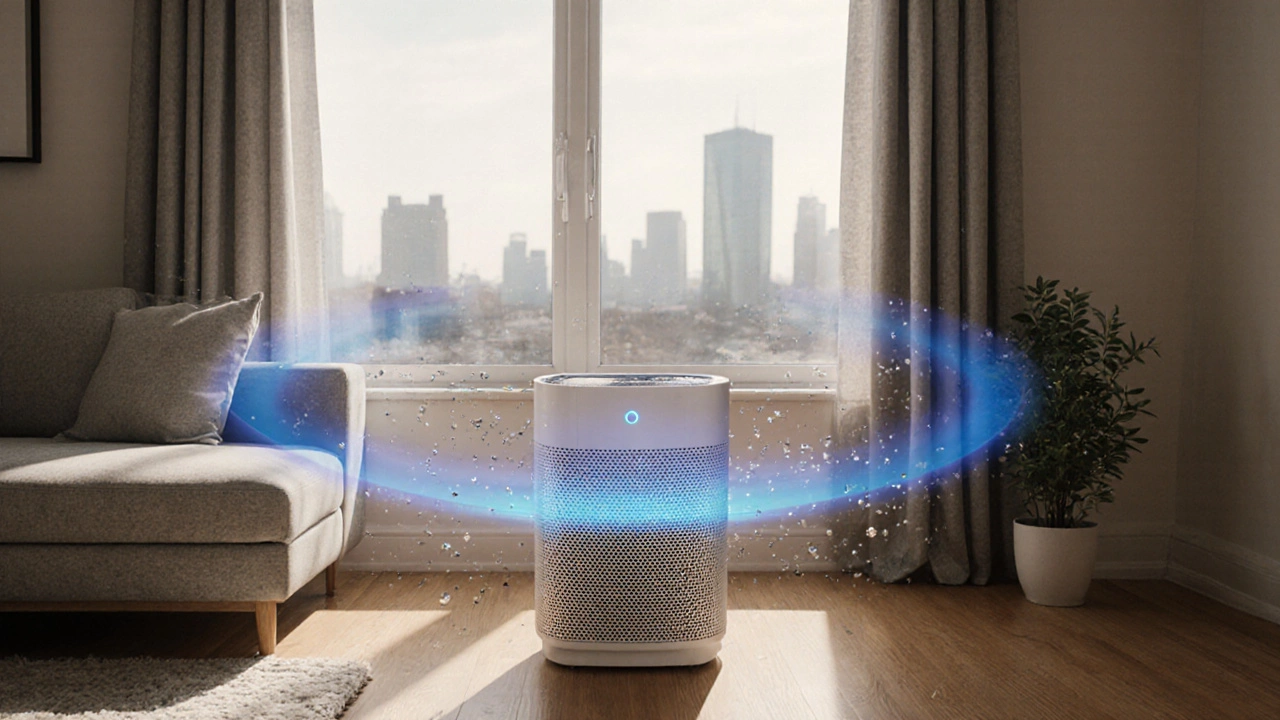When working with Purifier Efficiency, the measure of how well an air purifier removes pollutants from indoor air. Also known as air cleaner performance, it tells you whether a unit lives up to its claims. Two numbers you’ll see everywhere are Clean Air Delivery Rate (CADR), the standard metric that quantifies the volume of filtered air delivered per minute and HEPA Filter, a high‑efficiency particulate air filter that captures at least 99.97% of particles 0.3 microns in size. Understanding these basics lets you compare models without getting lost in marketing jargon.
Purifier efficiency isn’t just a single figure – it’s a blend of several factors. First, coverage area determines if a single unit can handle a whole room or needs a network for larger spaces. The CADR rating directly influences coverage; a higher CADR means faster cleaning for the same square footage. Second, filter type matters: HEPA filters excel at trapping dust and pollen, while activated‑carbon layers pull out smoke and odors. Third, airflow design – a unit with a smart fan that adjusts speed based on sensor data will often keep efficiency high while saving energy. Finally, placement is a hidden hero – putting the purifier in the center of the room or near a pollutant source can boost performance by up to 30%.
These elements relate to each other in clear ways: Purifier Efficiency encompasses Coverage Area, Coverage Area requires appropriate CADR, and HEPA Filter influences Indoor Air Quality. When you line them up, the picture becomes simple – pick a unit whose CADR matches your square footage, ensure it uses a true HEPA filter, and position it for optimal airflow.
Now, how do you put this knowledge into action? Start by measuring the room size (length × width) and check the manufacturer’s CADR‑to‑room‑size chart. If the recommended CADR is lower than your room’s needs, consider adding a second unit or a whole‑house solution that ties into your HVAC system. Next, verify the filter rating – look for “True HEPA” rather than marketing terms like “HEPA‑type”. Replace filters on schedule; a clogged filter can drop efficiency by half. Finally, run the purifier on a medium or auto mode for most of the day and only crank it up to high when you’re dealing with heavy smoke or a pet‑related allergen spike.
All of the advice above ties back to the core idea that purifier efficiency is a practical, measurable outcome, not a vague promise. By focusing on CADR, HEPA filtration, coverage area, and smart placement, you can turn any standard air cleaner into a powerhouse that actually improves indoor air quality. The articles below dive deeper into each of these topics – you’ll find coverage guides, filter lifespan tips, and even whole‑house integration strategies. Ready to see which tips match your home? Keep scrolling for the full collection of guides and reviews that will help you pick, place, and maintain the most efficient purifier for your space.

Learn how to calculate the time an air purifier needs to clean a room, using CADR, room size, ACH and filter types to get faster, healthier air.